In the year of 2021, China’s social policies had a major breakthrough with greater State intervention in billionaire national companies to increase the budget coffers of the government and the Communist Party of China, but also to control the influence of these companies on the economy and the country as a top.
Companies like Alibaba e a Tencent de tecnologia gave the government more than 23 billion dollars in favor of the “Common Prosperity” policy, a search to decrease the accumulation and socioeconomic inequality of China.

What is the policy of “Common Prosperity” or “Joint Prosperity”
In February 2021, Xi Jinping said in a press conference on poverty eradication that “Common Prosperity’ was China’s new stage of economic development.
With the Chinese economic growth of recent decades, the country’s companies have developed exponentially gaining more market value. The e-commerce company Alibaba Group, for example, reaches a market value of US$450 billion, and is the largest company in China.
But the accumulation of capital does not match the historical political currents of the Chinese government, which follows the “Common Prosperity” line of the national society. This policy aims at more egalitarian income distribution and domestic development in the country, strengthening a middle class and not polarization between rich and poor.
With the so-called State Capitalism (or Socialist Market Economy) that governs economic relations, there was the margin for China’s economic growth until it came as one of the new world powers. But there is still State mediation and intervention over private institutions so that the Party’s objectives, such as the eradication of social inequality, are still implemented.
So, the taxation of fortunes like big business is a form of control over the accumulation and political power that economic actors will have over government.
The “Common Prosperity” is an ancient policy of the Chinese social system, which seeks a development based on the elimination of poverty, the reduction of social inequality and the distribution of income.
From the collective ownership of the means of production (land, livestock, equipment etc.) and the collectivization of the countryside, there is an objective of a more egalitarian society with equal opportunities to all in the lifestyle, even though in the past, many of these policies have been a huge failure.
Steven Lynch of the British Chamber of Commerce in China commented to the BBC on Chinese economic growth and its functioning governed by “Common Prosperity”:
“Thirty years ago a Chinese family could have a bowl of dumplings once a month,” he told me on the phone from Beijing. “Twenty years ago, perhaps they could have a bowl once a week. Ten years ago – that changed to everyday. Now: they can buy a car.”
Steven Lynch, for BBC
The origins of the “Common Prosperity” or “Moderately Prosperous Society”
This Chinese social policy was first used in the 1953 edition of the government newspaper People’s Daily, in the Mao Era. Linked to collectivism and egalitarianism, Common Prosperity was being implemented through government reforms to make the Chinese internal economy more egalitarian, especially with regard to Chinese peasants and large poverty.
No centenary of the Communist Party of China, Xi Jinping said that the goals of Two Centennials are already taking place by achieving a “moderately prosperous society”.
This view of society is a heritage of Chinese Confucianism in conjunction with the current of Socialism, believing that the success of social development comes from a functioning middle class. In this way, it is possible to build an egalitarian domestic market that consumes and boosts national production.
It is the general objective that has mediated Chinese politics since its People’s Revolution: to consider it necessary that economic growth enables prosperity, but that it considers it necessary that this prosperity be distributed widely by society.
Examples of the “Common Prosperity” policy in the era of Xi Jinping
Since 2020, China has taken more interventive actions on the market, allowing its growth but also controlling it.
A Reform and Opening Policy made in 1976 by Deng Xiaoping, who opened the Chinese economy to the capitalist world, It was based on the view of an initial inequality where certain people would get rich first so that this income would be distributed and could raise the population to the middle class.
Following the changes applied in China by the Reform and Openness Policy, which establishes State Capitalism to develop the country economically, Secretary-General Xi Jinping has been investing in infrastructure to develop the peripheral and poorest areas of the mainland country.
In addition, deepens international relations with other nations so that it can stimulate Chinese industries and increase the country’s geopolitical power. Thus, achieving great power and improving the lifestyle of its population.
The collection of income of billionaire companies was another of the policies of its agenda in search of the most egalitarian society.
Xi Jinping wrote an article in October 2021 on theoretical review of the Communist Party of China on Common Prosperity and described it, together with the goals to achieve it:
“Common prosperity is the essential requirement of socialism and an important feature of Chinese-style modernization. What we mean by common prosperity is the common prosperity of all the people, the prosperity of the material and spiritual life of the people, not the prosperity of a few, nor is it uniform egalitarianism.”
Xi Jinping, Qiushi theoretical magazine
From the Cold War of Ideologies between the US and the USSR of the 20th Century to the new Cold War of 21st Century Ideologies between the US and China!
Since before World War II, the United States was the largest economy in the world. However, in recent decades, they have lost their position as the world’s leading manufacturing producer, importing more from other countries. But it is still a major center of production and export of ideas, values, and culture.
Intellectual production means a great intangible potential for the country, since with the dissemination of these ideas there is a diffusion of the interests of these countries.
The clash of the Cold War was very much based on a conflict of ideologies, the capitalist (US) ideologies against the anti-capitalist socialist ideologies (Soviet Union). They were manifested from the material and technological achievements of development, trying to prove that one nation was stronger than the other, which emphasized the success of one ideology to the detriment of the other.
The relationship between the US and China in this 21st century is not so polarized, due to the differences in the economic policies of present-day China and the former USSR, but also in the field of ideas.
The US goes through times of high inequality and few public policies to reverse this process. A “foreign policy for the middle class” (Foreign Policy for the Middle Class) by Joe Biden is a way to re-include the “ordinary citizen” in politics, as by following the most neoliberal ideals of a small government in the economy since the 1980s, economic inequality began to increase.
In the same country of super billionaires as Jeff Bezos and Elon Musk, the income of the middle class population stagnated. This foreign policy for the middle class is an attempt to combat the income disparity resulting from globalization from international policies, trying to follow the Chinese political method of market protection and domestic economy.
This new foreign policy is more an ideal of how the international policy of the United States should be, than a concrete plan with specific objectives of action.
The Chinese economy has undergone a great investment in its productive bases and in its growth in the international market. In recent years, the Asian power has been exploiting the spread of this accumulated capital as a way to propagate its socioeconomic ideologies.
Its Belt & Road Initiative (the new “Silk Road”) is a way to show the less developed international scene, in comparison to the European and American nuclei, that Common Prosperity is an objective to be achieved collectively.
So, from the investment in other countries, China reaches allies not only economically but ideologically as well.
What is observed is the Chinese attempt and commitment to become the world exporter of products and also of ideas and values, increasing its geopolitical power.
However, this investment was given only from the moment when the accumulation of capital became so uneven internally, that billionaire companies and their Ceos began to intervene and question the political power of the Chinese government, which led to a reaction of the same.
Therefore, the Chinese economic policy of “State Capitalism” preaches that economic growth must be followed and achieved, and then there will be a greater distribution to a large part of the population of this wealth that was generated by capitalism, and not only its accumulation by the economic elite.
If this model of Chinese economic policy succeeds in the long run by generating greater prosperity for society at large, it will be copied and implemented by other countries that will eventually abandon the most neoliberal American capitalist State system in the economy.
This would be the biggest revolution in economic thought in the last 2 centuries and would lead China to be the hegemonic country of the 21st century.
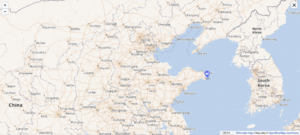




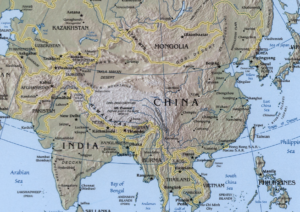
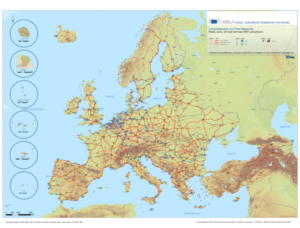








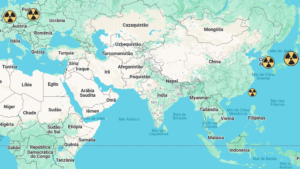
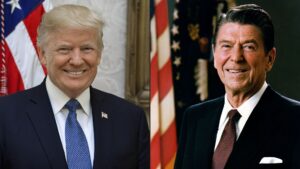
Be First to Comment